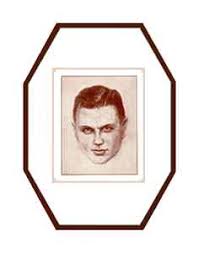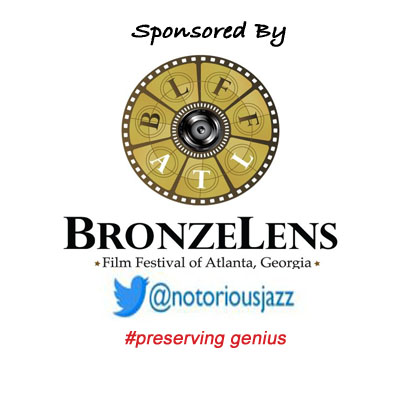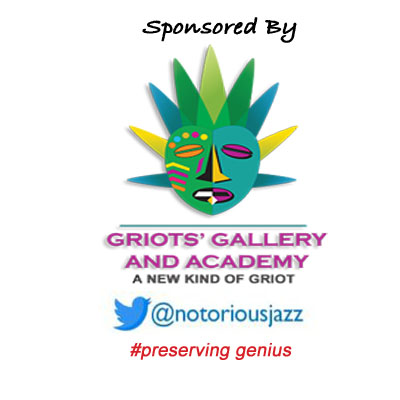
Daily Dose Of Jazz…
Peter Packay was born Pierre Paquet on August 8, 1904 in Brussels, Belgium and lived with his family in China for part of his childhood, but returned to Belgium in 1912. As a teenager he was crippled in one arm by an accident, but decided to learn to play trumpet anyway at age 20, joining the Varsity Ramblers.
He co-founded a band called Red Beans with David Bee and served as its principal composer of originals. Bee left the group and was replaced by Robert De Kers, and Packay remained its leader until its dissolution in 1929. In the 1930s he formed another group, Packay’s Swing Academy, which played with Coleman Hawkins among others. He also did arrangements for bandleader Billy Arnold.
As a composer, Packay’s works included Alabama Mamma, The Blue Duke, Dixie Melody, and Lullaby for a Mexican Alligator. Following World War II he gave up performance to concentrate on composition and arrangement for songs like Jazz in the Rain, One Day and Grey Skys.
Trumpeter, arranger, and composer Peter Packay died on December 26, 1965 in Westende, Flanders, Belgium.
More Posts: bandleader,history,instrumental,jazz,music,trumpet

Daily Dose Of Jazz…
Frederick Charles Slack was born on August 7, 1910 in Westby, Wisconsin and learned to play drums as a boy. He later took up the xylophone and at the age of 13 he changed to the piano. He studied with a local teacher throughout high school and at the age of 17, he moved with his parents to Chicago, Illinois where he continued his musical training.
Meeting clarinetist Rosy McHargue gave him the opportunity to accompany her to hear Bix Beiderbecke and Earl Hines. His first job was with Johnny Tobin before moving to Los Angeles, California where he worked with Henry Halstead, Earl Burtnett and Lennie Hayton.Then in 1934 he joined Ben Pollack.
He went on to play with the Jimmy Dorsey Band in the 1930s and was a charter member of the Will Bradley Orchestra when it formed in 1939. Known to bandmates as Daddy Slack, he played the piano solo on Bradley’s recording of Beat Me Daddy, Eight to the Bar, one of the early white boogie-woogie hits and a classic of the big band era.
Forming his own band in 1942 he signed with the newly founded Capitol Records and recorded three songs at his third recording session. His recording of Cow Cow Boogie was sung by the 17-year-old Ella Mae Morse and was Capitol’s first gold single. Slack continued to record some 80 tracks with Capitol until 1950.
Slack also recorded with Big Joe Turner, Johnny Mercer, Margaret Whiting and Lisa Morrow. He has been mentioned in song, co-wrote the 1945 classic The House of Blue Lights, first recorded with singer Ella Mae Morse.
Swing and boogie-woogie pianist and bandleader Freddie Slack was found dead in his bedroom in Hollywood, Los Angeles, California, from undetermined causes on August 10, 1965.
More Posts: bandleader,instrumental,jazz,music,piano

Daily Dose Of Jazz…
Lawrence Brown was born on August 3, 1907 on August 3, 1907 in Lawrence, Kansas. When he was about six or seven years old his family moved to Oakland, California. He began playing the violin at a young age, but quickly grew tired of it and turned to playing the tuba in his school’s band.
Coming from a musical background, his mother played the organ and the piano and he often sang as a part of his father’s sermons when he preached at the A. M. E. Church. Brown discovered the trombone while doing janitorial work at his father’s church and wanted to replicate the sound of cello on a trombone.
Beginning his career with Charlie Echols and Paul Howard, in 1932 he joined Duke Ellington’s band. He was featured with the band every year on compositions such as Blue Cellophane and Golden Cress. Leaving Ellington’s band in 1951, Lawrence joined Johnny Hodge’s band, where he stayed for four years. After this stint he took a five year position as a session player with CBS.
He rejoined Ellington in 1960 and stayed with him until 1970. After leaving Ellington’s band the second time at the age of 63, Brown stopped performing.
Trombonist Lawrence Brown, whose fast technical style inspired trombonists from Tommy Dorsey to Bill Harris, died on September 5, 1988 in Los Angeles, California, at the age of 81.
More Posts: history,instrumental,jazz,music,trombone

Daily Dose Of Jazz…
Charlie Queener was born in Pineville, Kentucky on July 27, 1921 or 1923, the actual year of his birth is in question. During the Forties he worked with the Muggsy Spanier Orchestra, Harry James Orchestra, Benny Goodman Orchestra, Joe Marsala Orchestra, and Glen Gray among others.
Between 1946-50 Queener settled into Nick’s in New York and then spent much of his career freelancing with Dixieland all-stars. Among his associations were Bobby Hackett, Billy Butterfield, Jimmy McPartland, Ruby Braff, Max Kaminsky, Wingy Manone from 1954 to 1960, Wild Bill Davison and with Clarence Hutchenrider on and off from 1958 to 1973, to name a few.
He worked into the 1990s, also composed orchestral works starting in the mid-1960s but never led a record session of his own. Pianist Charlie Queener, who played in Dixieland, swing and mainstream settings, died in July 1997.
More Posts: history,instrumental,jazz,music,piano

Daily Dose Of Jazz…
Emmett Berry was born on July 23, 1915 in Macon, Georgia and began to study classical trumpet, but by 18 had switched to jazz and moved to New York City. Becoming a member of Fletcher Henderson’s band he later replaced Roy Eldridge as soloist.
In the 1940s he worked in Eldridge’s Little Jazz Trumpet Ensemble. He also played in Count Basie’s band. He is known as an accompanist for Billie Holiday, was in the photograph known as A Great Day in Harlem, and the special The Sound of Jazz.
He recorded 39 albums as a sideman with Buck Clayton, Johnny Hodges, Sammy Price, Jimmy Rushing, Cannonball Adderley, Count Basie, Sidney Bechet, Ruby Braff, Bobby Donaldson, Dizzy Gillespie, Edmond Hall, Coleman Hawkins, Fletcher Henderson, Claude Hopkins, Jo Jones, Red Prysock, Buddy Rich, Pee Wee Russell, Maxim Saury, Buddy Tate, Joe Williams, and Jimmy Witherspoon.
Trumpeter Emmett Berry, who also played flute, piano, vibraphone, congas, and drums, died in Cleveland, Ohio on June 22, 1993.
More Posts: history,instrumental,jazz,music,trumpet



